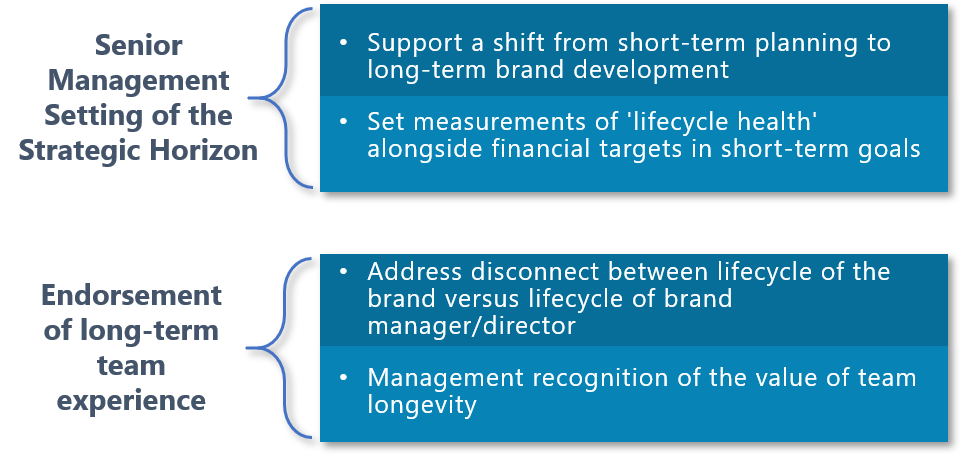Allow Time to Think of the Future
“We don’t have time to prioritise what we should be doing to prepare for the future; we are too busy doing things to prepare for the future.”
As a team, how can we be expected to deliver a plan that will best position the brand or portfolio to succeed if we can’t make time to think about the future and effectively prioritise our actions?
With the multitude of short-term issues to address being the usual focus, even when time is dedicated to long-term planning, priority is given to the more immediate issues. All too often, teams park their mid- to long-term planning as they put in every effort to hit aggressive growth targets. While understandable, a significant consequence of this lack of focus at a critical stage is that many teams can find themselves 3–5 years past launch with a gap in their LCM activities. How do we as a team reframe our thinking and ensure that longer-term planning is considered an equivalent priority?
Drive Longer-Term Thinking
There are two key areas in which a shift to longer-term thinking can be driven:

One key area that can be driven by senior management is the setting of the strategic horizon, supporting a shift from short-term financial planning to long-term brand development.
Cascading this focus down within functional groups alongside the creation of dedicated teams can ensure that adequate attention is given to the long-term development of a brand even in the face of urgent short-term issues.
In many functional groups, it is the disconnect between lifecycle of brand and lifecycle of a team member that often drives the failure to successfully plan for the full product lifecycle. In many companies, the average career path of a brand manager or director is very short, around 2–3 years. As such, team members focus on making an impact in the short term as opposed to working towards success that will not be realised in their ‘lifetime’ supporting the brand.
If the balance is struck between short-term planning and long-term brand development, with a distinct membership allowed to focus on LCM, then effective structures and processes can be implemented. The next article in our series will explore what these structures and processes should look like to ensure successful LCM. Stay tuned!

